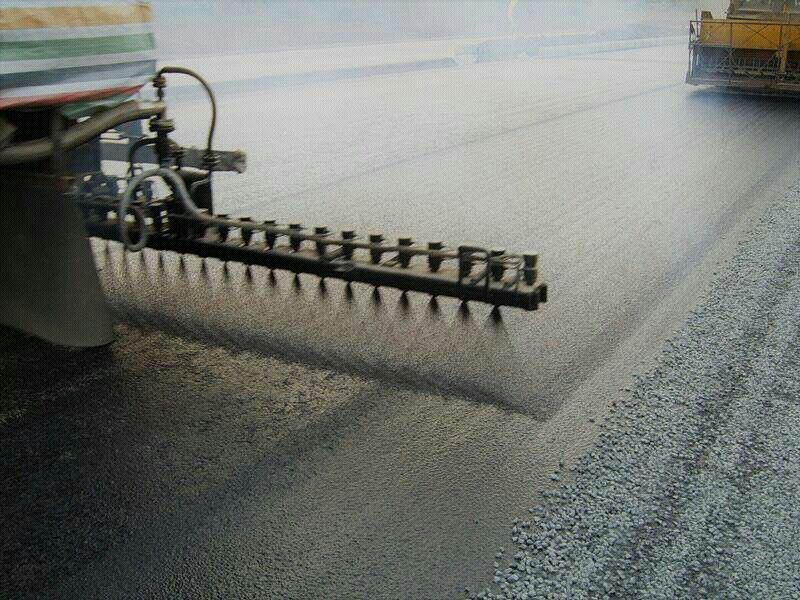
Anionic Bitumen Emulsion RS-2

Description of Anionic Bitumen Emulsion RS-2
For anionic and emulsions, there are several grades of different breaking characteristics. Rapid-setting emulsions are used for surface dressing, while medium or slow-setting emulsions are used for ‘mixtures’, that is mixed with aggregate either in concrete-type mixers or in situ. Rapid-setting emulsions are not used for mixtures because they would tend to set during the mixing process and clog the mixer. Generally, in making mixtures, the finer the aggregate used, the slower setting the emulsion that has to be used. Therefore, stone mixtures require medium-setting emulsions and sand mixtures require a slow-breaking emulsion. With anionic emulsions, the breaking process is predominantly by evaporation of the water in the emulsion continuous phase. Because of this, anionic emulsions are susceptible to temperature and humidity in terms of their breaking properties.
An Anionic emulsion has a negative charge, most of the things in the world are Anionic and that is why the majority of Research and Development, formulating, and lab testing has been done in the Industrial Coatings Industry to make coatings from Anionic systems. When an Anionic emulsion is mixed with a Cationic emulsion a strong bond develops and the result is the changing of the substance to a solid. This result is not ideal to be used as a coating because it cannot be applied to substrates.
Application of anionic bitumen emulsions RS-2
Anionic Slow Setting bitumen emulsion is the cold/non-fiberated liquid applied waterproofing bitumen emulsion. The product is made using a process in which the bitumen, special emulsifier, water and other additive have been gone through a high shear rate colloid mill and the properties of bitumen have the direct effect on the emulsion specification. This product has been specifically developed to provide waterproofing and building application, concrete and metal surface. The high flash point and the low solvent content make RS-2 an easy to use and a safe product. RS-2 can be applied by using a painting brush, squeegee, airless spray, and roller.
Anionic Bitumen Emulsion RS-2 is recommended for Surface Dressing treatment and the application rate as per MoRTH is as below

Packing of anionic bitumen emulsion RS-2
Packing of anionic bitumen emulsion RS-2 is in the new thick steel drum on the pallet to prevent any leak inside of container also bulk in bitutainer and tanker.
Specification of anionic bitumen emulsion RS-2
| PROPETRY | MIN | MAX | TEST METHOD |
| Viscosity SFS , 25 °C (s) | 20 | 100 | ASTM D244 |
| Storage stability, 24h (%) | 1 | ASTM D6930 | |
| Particle charge test | Minus | ASTM D244 | |
| Demulcibility , 35ml, 8% dioctyl sodium sulfosuccinate, % | 60 | — | ASTM D6936 |
| Sieve (%) | 0.1 | ASTM D6933 | |
| Residue by distillation (%) | 63 | ASTM D244 | |
| Residue penetration, 25 °C | 100 | 200 | ASTM D5 |
| Solubility in trichloroethylene % | 97.5 | — | ASTM D2042 |
| Residue ductility, 25 °C, 5cm/min (cm) | 40 | ASTM D113 | |

